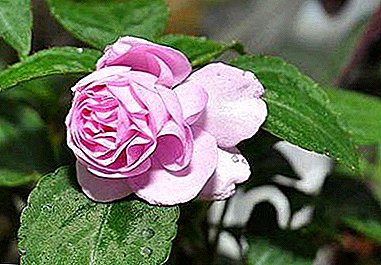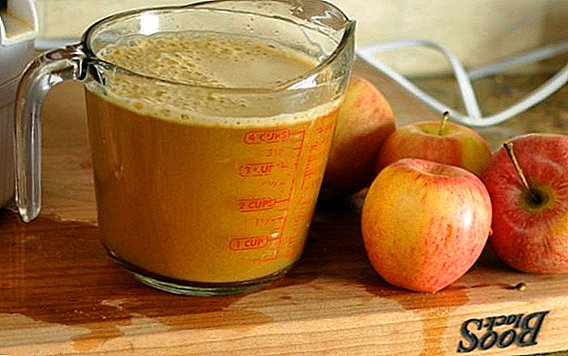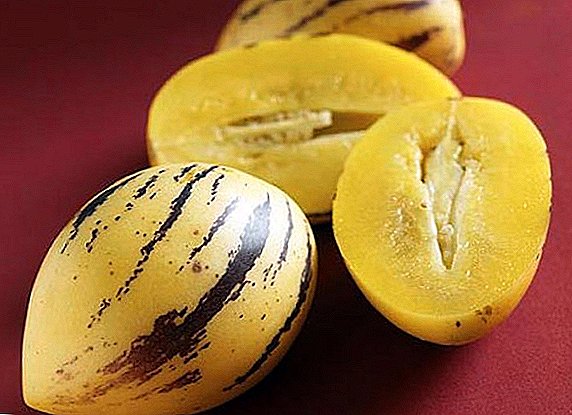
Many people know balsam as a simple Vanka wet. But this flower has different varieties, which are famous for the diverse appearance. What is the difference from the familiar Vanka from the more refined pink balsam of the variety “Tom Samb”?
How was he bred? What does he look like? How to grow such a flower and how to take care of it? All these questions you can find the answer in this article.
In addition, here you can see the photos of the balsam "Tom Samb", which will help you to appreciate the beauty of this wonderful plant.
Botanical characteristics and history
Impatiens pink variety "Tom Samba" (Impatiens Balsamina) belongs to the Balsamine family. The plant is annual herbaceous. It blooms from June to the first frost. Fruits box with brown brown rounded seeds. The shape of the plant is pyramidal.
Under natural conditions, balsam grows in India, Malaysia and China, and its historic homeland is Zanzibar Island in Africa. It was domesticated in the 16th century in America. At the same time, it was delivered to the Portuguese ship in Europe. He first came to Russia in the 19th century, and almost immediately became very popular, decorating the window sills of many houses at that time.
Description of appearance and features
"Tom Samb" in contrast to the fellow is a short balsam, and can grow only up to 40 centimeters in height.
As the name implies, it has double flowers of camel-shaped pink color (you can find all the details about other varieties of balsam terry here). Buds widely open petals, because of what balsam has an elegant appearance. The flowers are large, reaching a width of 7 centimeters. The foliage is thick, bright green, the leaves themselves are heart-shaped. Stems are watery, and therefore fragile.
A photo
Here you can see photos of balsam Tom Samb:



Where and how to plant?
- Seeds are planted in containers for seedlings in early spring.
- They are placed in the top layer of soil, at a distance of 20-30 centimeters from each other. To avoid the rapid evaporation of moisture and protect seedlings from overheating, you should mulch the soil with peat.
- The soil is moistened with a sprayer. You can also cover the earth with a film or glass (but you should air the greenhouse once a week). It is also necessary to provide 10 hours of daylight per day.
- It should maintain a temperature of about 20 degrees, and the first shoots will grow in just a week and a half. After their appearance, the airing time should be increased.
- As soon as the sprouts reach 1 centimeter, then they immediately swoop in a container under one flower.
- As soon as the ground in the garden heats up, then young plants are planted together with a clod of earth.
The transfer must be neat, otherwise you can damage the tender sprout.
Usually sprouts begin to thrive quickly, but if this does not happen, you should pinch the tip.
With the advent of buds, the most comfortable temperature for a balsam is the range of 15-17 degrees.
Lighting and location
Pink balsam is not particularly fond of home conditions: in the house it will grow only in height, trying to reach the source of light.
In the garden, balsam rose balsam will be comfortable in well-lit or semi-dark places. If in the afternoon, at the height of solar activity, a shadow falls on the balsam, it will save him from burns. You can place the flower near the trees with sparse crown.
Though “Tom Samb” is short, winds and drafts can still break its stalks. Therefore, when choosing a place, you should give preference to those areas that are protected from the wind.
Soil requirements
The soil for seedlings should be loose, with high breathability. A low acid or neutral environment is optimal. Suitable soil of the following composition: turf ground, leaf soil, humus, peat and sand in equal parts.
The mixture is sterilized with boiling water or a solution of potassium permanganate. This will protect her from fungal damage.
How to care?
 Pink Balsam likes abundant watering: with a lack of moisture, it can simply lose color and fade altogether. It is recommended to water the flower after sunset, because during the day the evaporation of liquid from the foliage can burn the plant.
Pink Balsam likes abundant watering: with a lack of moisture, it can simply lose color and fade altogether. It is recommended to water the flower after sunset, because during the day the evaporation of liquid from the foliage can burn the plant.
Do not allow water to enter the buds.
You can additionally feed the plant with supplements every two weeks. with potassium and phosphorus. Fertilizing with nitrogen will increase the green color of the foliage, but will prevent the flowering of the plant.
In summer, for more active flowering, you can pinch the tops of young stems.
Common diseases and pests
- The most common disease affecting the pink balsam is gray rot. It occurs when there is an excess of moisture in the soil and causes rotting of the roots. Externally manifested drying and falling buds. To cure, remove the damaged parts of the plant, and then apply the Bordeaux treatment.
- Of insects, spider mites are dangerous (they appear as yellow spots on the leaves and cobwebs in the internodes). The parasite’s attack may be too dry. To fight ticks should be acaricidal drugs.
- Yellowed leaves with sticky dirt on them can be symptoms of whitefly lesions.
- If the young leaves are deformed, thrips are often the cause. They are not so easy to withdraw. It takes about three insecticide treatments.
Breeding
There are two methods for breeding pink balsam: grafting and seed.
Cutting is suitable for those who already have a mature plant. Moreover, this method is faster, and flowering when using it comes sooner.
- During the period of growth of buds, cut off the upper parts of the shoots with a length of about 8 centimeters.
- Then rooted either in water or in the ground.
- Within a week, the first roots will appear in the cuttings. After which they can be planted.
When propagating by seeds, it will be possible to see flowers in the planted plants only in 3-4 months.
Seeds can be harvested on their own, but you should be careful: if the fruit box is ripe, then it bursts when touched. Therefore it is better to cut the unripe boxes. Then the seeds are dried and stored, wrapped in paper. For 6-8 years they are suitable for disembarkation.
Caring for pink balsamic "Tom Samb" is not such a difficult task. And in gratitude, an unpretentious plant will greatly decorate the garden, delighting the owner with large pink flowers all summer.












